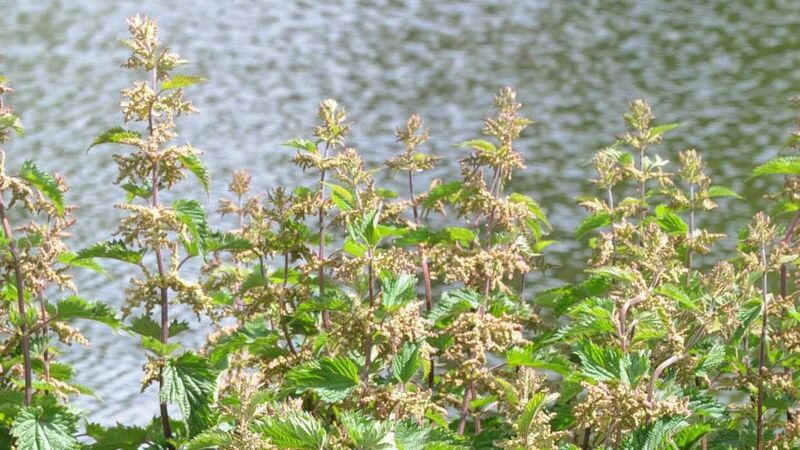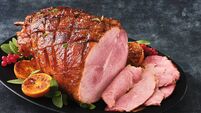How the foraging and hunter-gathering lifestyle can improve your health

GO FORAGE: In a 12 month period, Mo Wilde ate more than 300 species of plants (like nettles), 87 species of fungi, 20 species of seaweed as well as some wild animals, insects, shellfish, fish and game birds.
It is fuelling premature death and disability and chronic diseases such as cardiovascular disease, Type 2 diabetes and obesity.
While the global food system we have created can feed the world, says Collins, it has “also made us heavier and sicker, it destroys wildlife, pollutes our rivers and air, and produces a third of our greenhouse gas emissions. In Ireland, we now have a disturbing over-consumption/under-nutrition paradox.”
According to the Climate and Health Alliance, we need a food revolution – and the farming industry should be a key part of the solution.
Many of us have got it terribly wrong, despite our knowledge about nutrition. We consume ultra-processed foods and excessive red and processed meat at the expense of fruit, vegetables, plant proteins, wholegrains and sustainable seafood. Poor diet kills one in five people globally.
It is this reality that prompted The Wild Biome Project, taking place across England, Scotland, Wales and Ireland. It involves 26 foragers living like modern day hunter-gatherers.
It’s a fascinating project that is the subject of a BBC Sounds programme featuring two men, Alex and Rob, who attempt to survive for three months only eating wild food.
With wheat, rice and potatoes off the menu, Alex - a chef - spent time processing wild ingredients to fill the gap. He gathered sorrel, sweet chestnut flower (an edible seed used in cooking since ancient times) and acorns to provide carbohydrates.
The inspiration for The Wild Biome Project was fuelled by an earlier and even more ambitious wild food adventure. Mo Wilde, author of a book called , has been teaching foraging for more than 15 years. (You have to be taught this stuff to ensure you don’t eat poisonous mushrooms, for example).
Wilde’s book tracks a year of eating only wild food. She had always wondered whether it’s still possible to live like that. She mainly foraged but also did some fishing and exchanged skills with a friend for deer, who was in a position to cull the animal.
This bartering activity was part of Wilde’s modus operandi for the experiment, having decided not to exchange money for food.
Overall, in a 12 month period, Wilde ate more than 300 species of plants, 87 species of fungi, 20 species of seaweed as well as some wild animals, insects, shellfish, fish and some game birds. In the first nine weeks, She dramatically lost 12 kilos in weight without really trying. She never felt hungry.
Because some of the food she was consuming was so nutrient dense, there wasn’t a need to ingest too many calories.
Wilde’s gut, in the words of a laboratory technician, became “a super responder”. She was deemed very healthy.
But just by incorporating a small bit of wild food into our diets, we would significantly increase the amount of nutrients we consume. These particular micro nutrients and vitamins aren’t regularly available in commonly bought food.
Wilde has heard the argument that if everybody foraged, there wouldn’t be enough food to go around. But she points out that she has never noticed a shortage of nettles and if they didn’t grow in the UK, “we’d probably be flying them in as a super food because they’re so nutritious and above all, they’re free.”
If you think that eating nettles would be painful, literally, Wilde describes how to deaden the sting. The flavour of nettles is described as nutty. I’ll take the forager’s word for it because I’m too chicken to try it out.
What has gone down in medical history are the results of ten Aboriginal people who, at the request of health researcher Professor Kerin O’Dea in 1982, left the towns they were living in to survive as hunter gatherers in north-west Australia. They all had Type 2 diabetes linked to their diets which were full of unhealthy processed food. Although town dwellers, the Aborigines knew how to survive in the bush. During the experiment, they ate kangaroo, yams, turtle, crocodile wild birds, figs and honey. As a result, they lost weight – and their symptoms of diabetes reversed very quickly.
We all need to cut down on processed food whose health outcomes are chronic leading to shorter life spans. You may not have the skills to go out foraging but even small changes can make a noticeable difference. Drop the sugar and white flour and note the benefits.







 App?
App?







